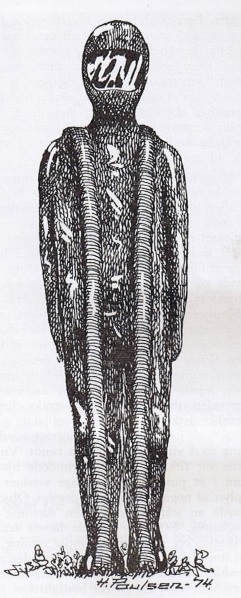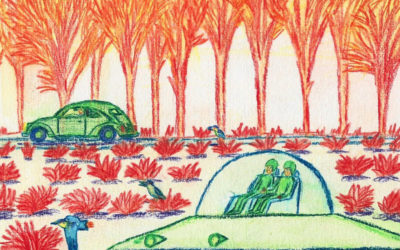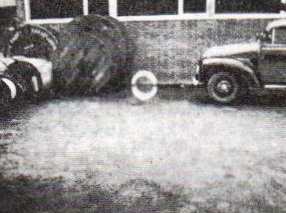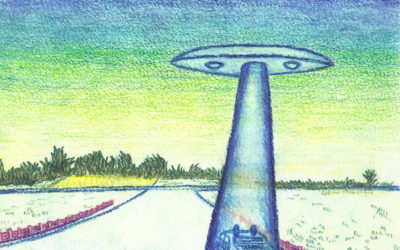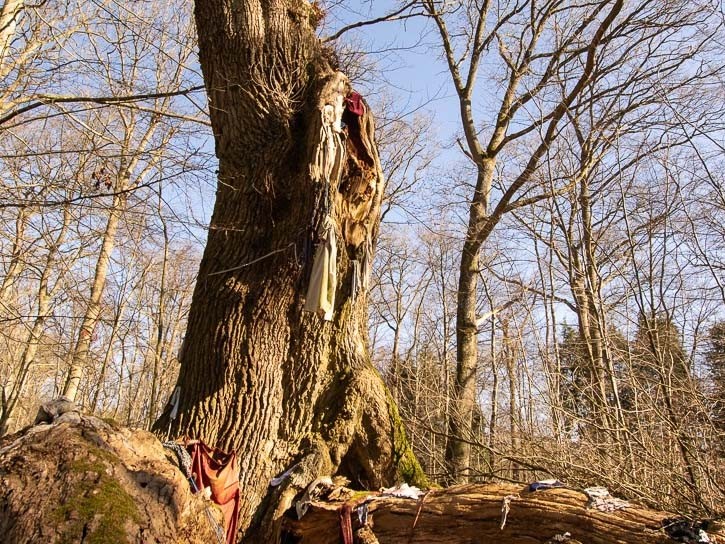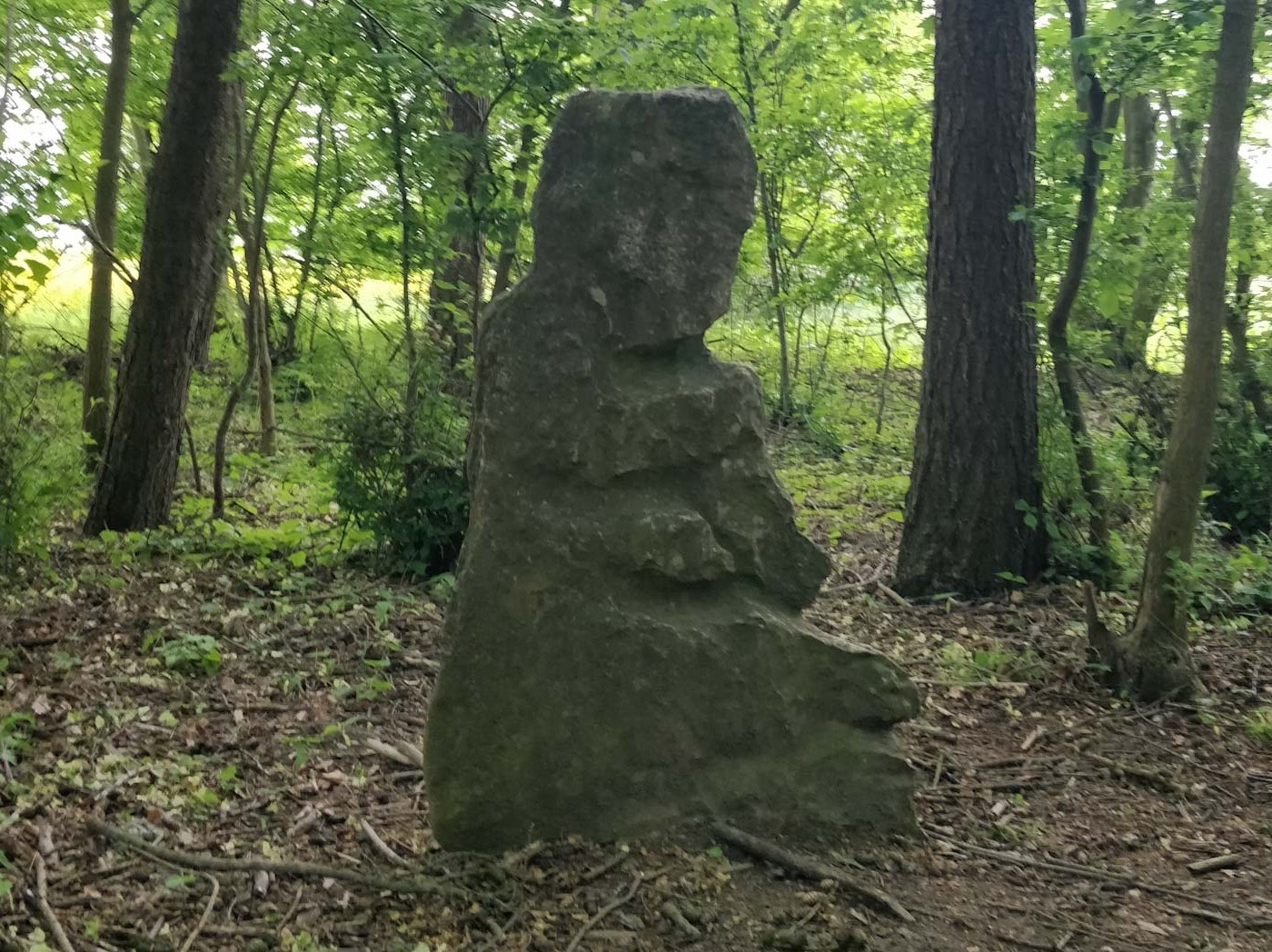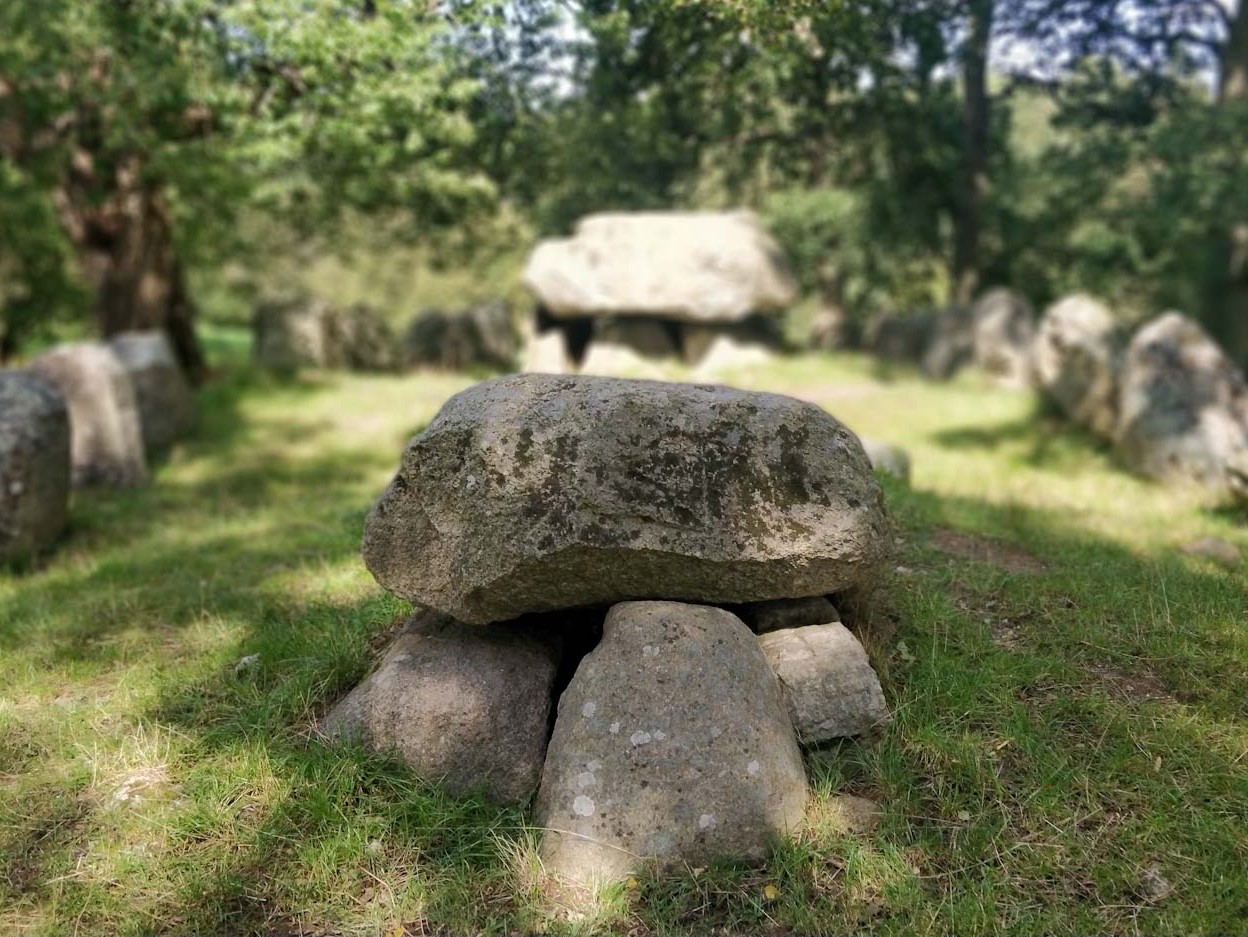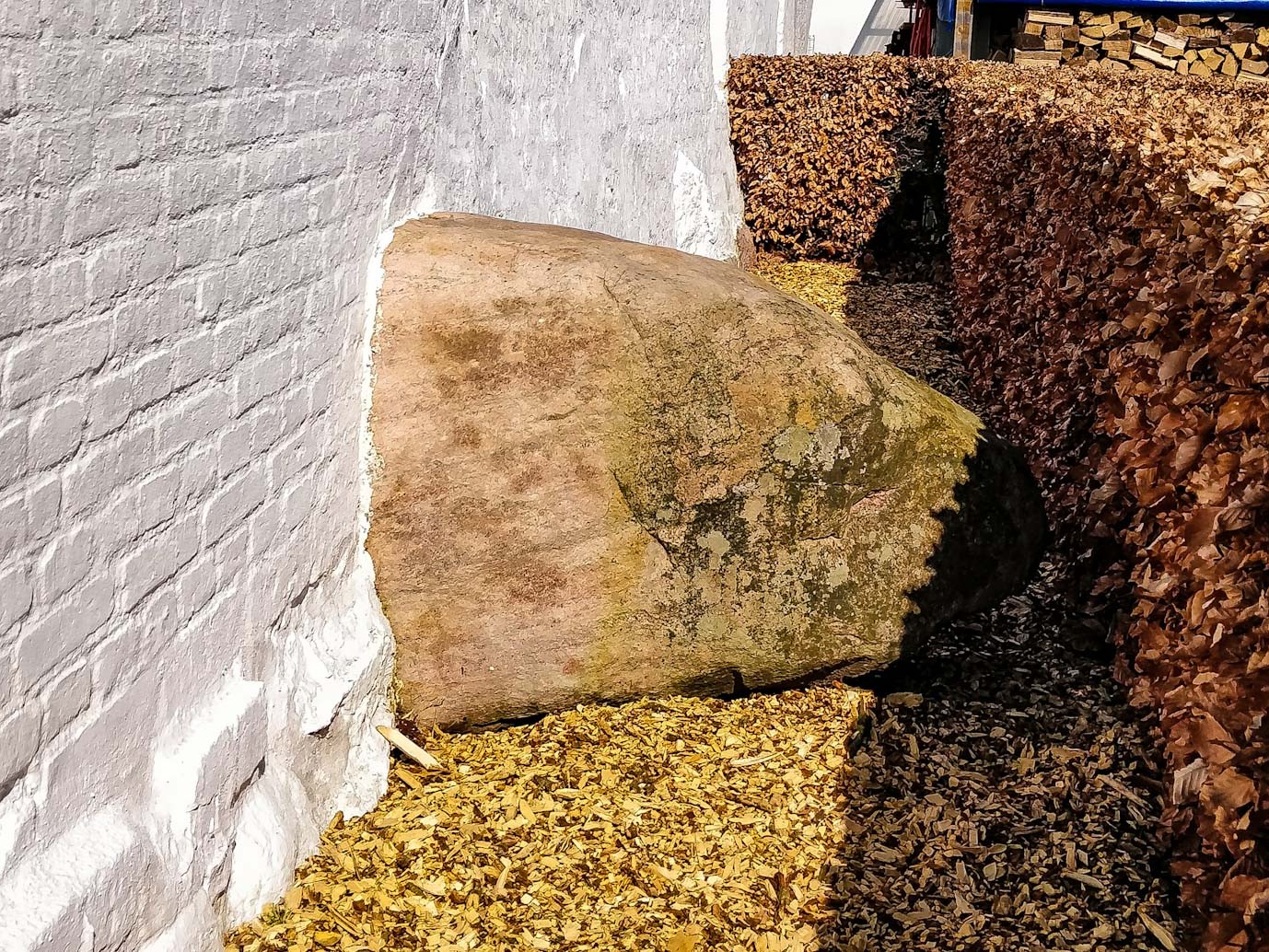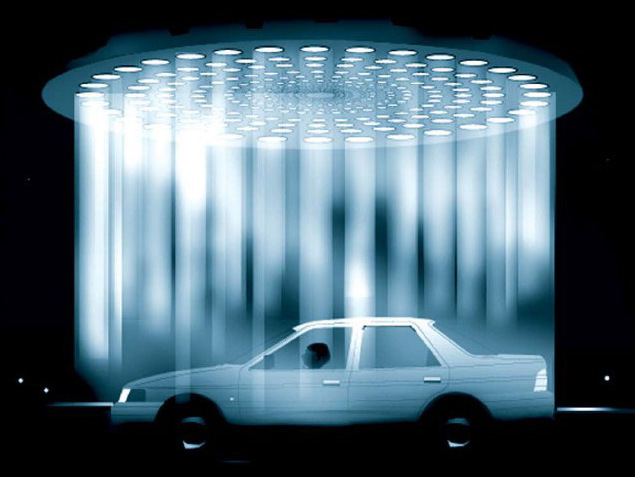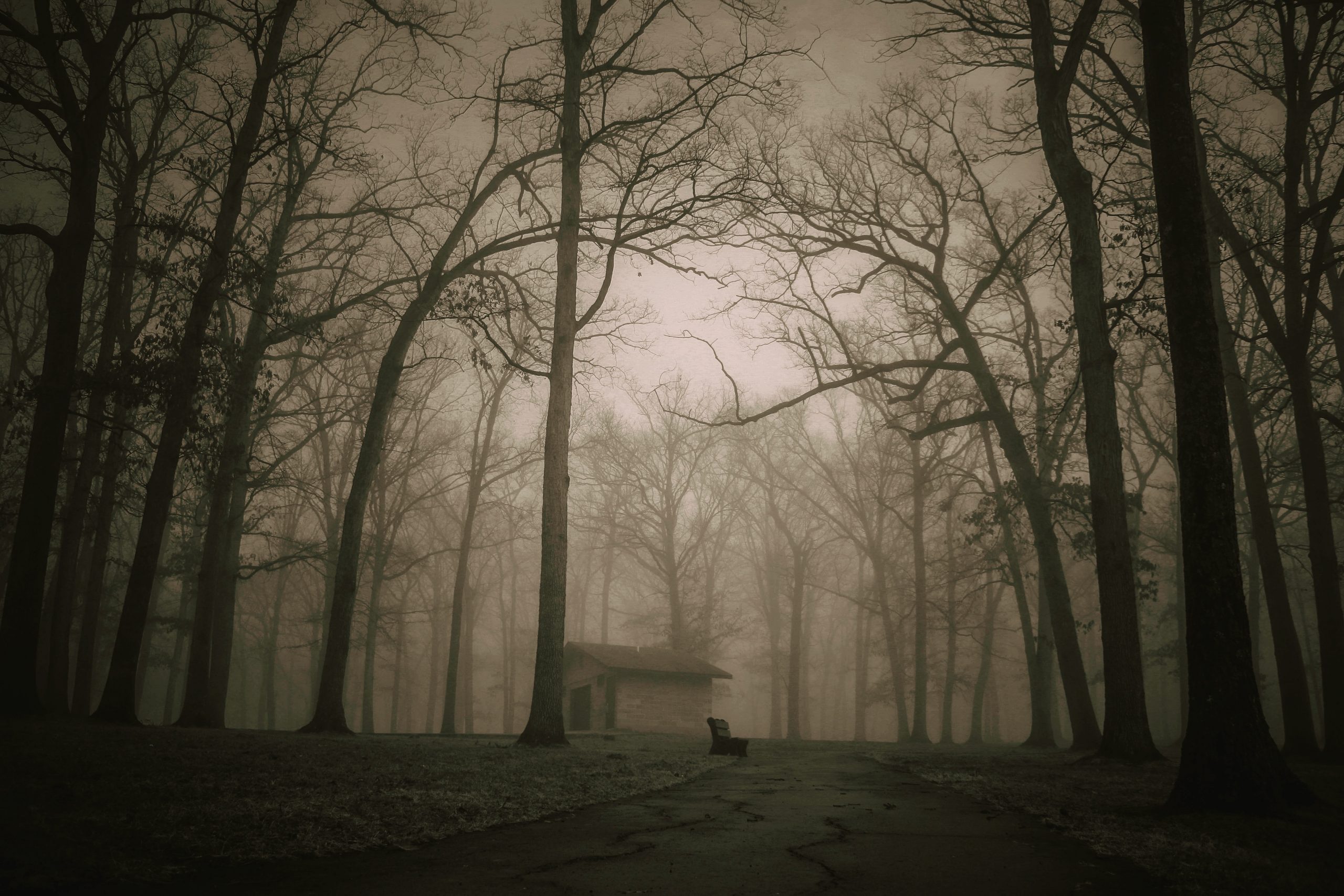Case Type: CE3, Landing Case
When: July or August, 1940 (Reported and published in 1974)
Where: Tisbjerg Hill, Kgs. Thisted (around 56.74614, 9.61684)
Investigator(s): N/A
The Experience
On a clear and sunny summer afternoon in 1940, the witness, then a 15-year old boy, was walking towards the hill Tisbjerg (Tirs Bjerg = Tyr’s Mountain) between the meadows and the heath, somewhere to the southeast of Kongens Thisted. He was going there to fill a herd of cows’ drinking trays with water.
The witness was walking along the field road that goes around Tisbjerg by the north and had just reached the foot of the hill, when he saw three strangely dressed people walking side by side from the northeast, in his direction. They were wearing skin tight dark green clothing, made of a shining , silk-like material, that reached all the way up over their necks covering part of their chins. On their heads they had tight-fitting helmets of the same dark green colour as their clothing, their faces covered by a transparent material resembling glass. On the front of the suits were two tube-like protrusions, each 10cm wide, going from the shoulders to the feet. The three figures did not appear to wear any type of shoes. Neither could buttons, zippers or pockets be seen on their clothing. They were of normal proportions and average height. Their gait was also normal, although the witness noticed that they were swinging their arms slightly when they walked.
He then spots a round, shining, dome-shaped vehicle parked on the heath, 200 metres away from the hill. This vehicle’s fuselage was clear enough to reflect the sunlight and there were no wheels, landing gear, doors or hatches visible. The witness was not sure about the exact dimensions of the vehicle, but got the impression it was at least the size of a contemporary fighter aircraft. Since the incident took place during the German occupation of Denmark in World War Two, the boy instantly assumed the vehicle was some kind of advanced German military aircraft and the strangely dressed people its pilots.
When the three figures finally reached the object, they all stood still in front of it for a moment. Thereafter, they just disappeared. The boy was puzzled by this, as he had expected them to open some door and go inside normally. After a few seconds the craft rose silently and vertically, at first very slowly, but suddenly it turned towards the south-east and started to accelerate off at an angle at enormous speed. After a few seconds, it could no longer be seen. A high-pitched sound, similar to that of swinging a long fishing-pole through the air, could be heard when the craft accelerated. After the vehicle was gone, the witness ran down to the landing site. There, he noticed that the vegetation on the heath had been depressed by the vehicle but was starting to rise up again. He could find no traces of any permanent damage to the vegetation.
After the war, the witness would develop an interest in UFOs. In 1974, he finally decided to contact Scandinavian UFO Information about the incident. That same year, an article along with a few illustrations by H. Poulsen was published in the journal UFO-Nyt.
Commentary
The main caveat in regards to this case is that it was reported more than 30 years after the fact. At this point, not only could the memories of the event have faded, but also have been influenced and distorted by the growing number of UFO landing cases during the 1960s and 1970s. Put frankly, while an interesting account, there is nothing about the Thisted case that couldn’t have been pieced together – whether consciously or unconsciously – by reading the available UFO literature of the early 1970s. By the same token it must be said though, that we do know of similar UFO cases that ARE on record during that time period. So it is certainly possible that at least the core experience was real (or at least felt real).
It is noteworthy that the witness at no point during the sighting thought the strangely dressed people were extraterrestrials and their vehicle a spaceship from another planet, even though it resembled a classic flying saucer. But one again has to remember that this allegedly happened in 1940, 7 years before Kenneth Arnold’s sighting that heralded the modern UFO age. Furthermore, until the 1950s, the most widespread theory about flying saucers was that they were secret military aircraft, missiles or space exploration vehicles being test flown by either the United States or the Soviet Union, built on German technology.
The fact that both the boy and his mother instantly thought the flying saucer-like vehicle was a top secret German military aircraft and the entities Luftwaffe pilots becomes rather interesting in hindsight: After the war, an elaborate mythology has arisen around so-called Nazi UFOs. In the lighter versions of the Nazi UFO mythos, WW2 Axis engineers built jet-powered circular experimental aircraft that perfectly resembled classic flying saucers of 1950s science-fiction.
With all that in mind, it is very interesting that we actually have a report of a Close Encounter of the Third Kind made during World War Two in which the entities could very well have been human air force pilots wearing high pressure flight suits, with the witness at the time being convinced what he saw was an advanced German experimental aircraft and its crew.
Sources
- UFO-Nyt #6 (1974)
Tags
In the same category…
The Store Vildmose CE3
One late autumn evening in 1957, a farm owner and his wife were driving through the Store Vildmose area, when they observed a strange looking craft.
Soap Bubble UFO’s
During the 1960’s and 1970’s it appeared as if Denmark was being visited by seemingly sentient, soap bubble-like objects. What were these strange bubbles, and what happened to them?
The Evald Maarup Case
The 1970 incident involving police officer Evald Maarup is considered one of the most credible, unexplained UFO cases from Denmark. It gained a lot of publicity both at home and abroad, with journalists as far away as Ghana wanting to cover the story.


